The Lemon Grove Mummies: Ancient Corpses From Mexican Cave Found In California Garage
The Lemon Grove Mummies: Ancient Corpses from Mexican Cave Found in California Garage

On an ordinary day in 1980, a Californian mom decided to spend the afternoon cleaning out her garage – a long neglected chore. She found a lot of trash and plenty of knick-knacks; some forgotten memories arose but nothing unusual. That is until she came to a carton buried in the back. Inside, she found the corpse of a young girl and an infant. Horrified that something so ghastly was lurking in her garage, the mom called the police at once. The Lemon Grove PD arrived ready to investigate a murder. Instead, they stumbled upon a mystery. The two bodies found in that California garage may have been victims but their deaths had taken place centuries earlier.
Read more…
More Posts from Llamaslikesciencetoo and Others

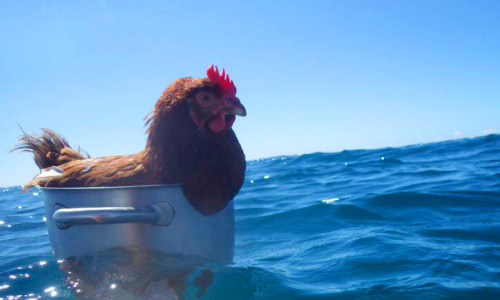
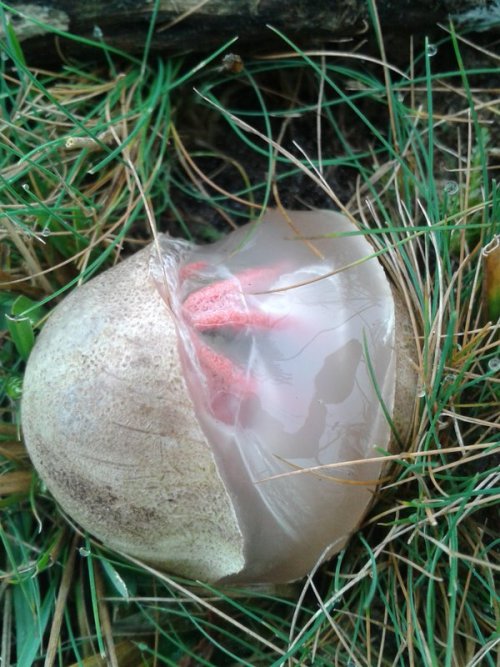
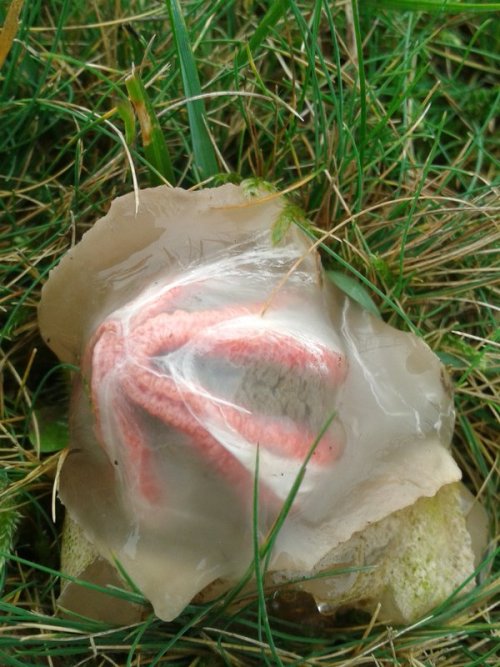
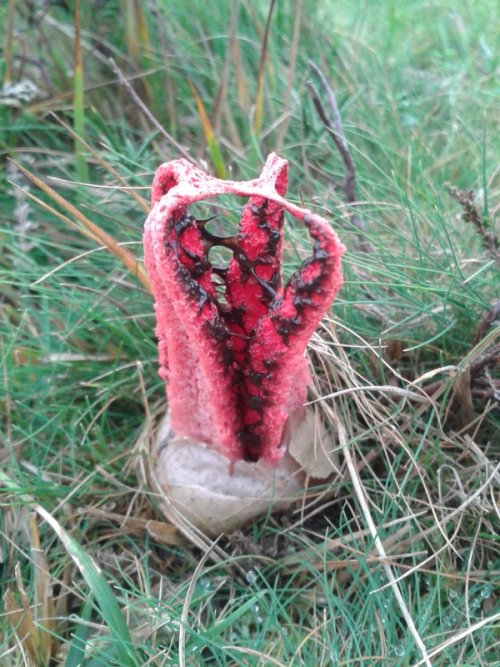
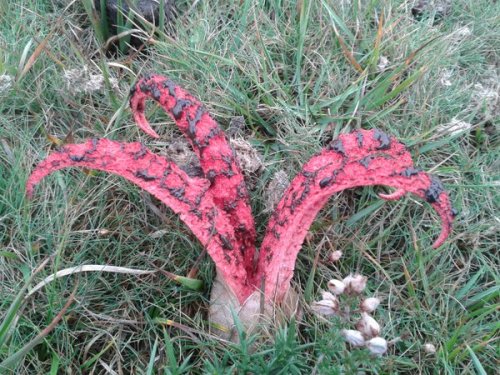
(image credit to Dan Hoare on twitter)
I ONLY JUST LEARNED ABOUT THE EXISTENCE OF THIS MUSHROOM????? WHICH ERUPTS FROM AN EGG BEFORE UNCURLING HELLISH ARMS, EXPOSING ITS STICKY MASS OF SPORES TO BE SPREAD BY FLIES ATTRACTED BY THE SCENT OF ROTTING FLESH???
Admittedly, I am easily won over by all organisms that attract flies with the scent of rotting flesh. But the octopus stinkhorn (Clathrus archeri) also has tentacles, a freaky egg stage, and blackish goop, so it’s my favorite now.

New Species of Shieldtail Snake Discovered in India
by Enrico de Lazaro
The Khaire’s black shieldtail (Melanophidium khairei) is described in a paper recently published in the journal Zootaxa by an international team of scientists led by Dr. David Gower of the Natural History Museum, London, UK. The newfound species occurs in southern Maharashtra, Goa, and northern Karnataka. It is the most northerly member of the genus…
(read more: Science News)
photographvia: David J. Gauer et al.

So You Think You Know Cephalopods?
Pop Quiz! Georgia Aquarium Wants to Test Your Knowledge of Cephalopods

x

Baby parrots look like dinosaurs (Source: http://ift.tt/21GVxRO)



Meet the orchid mantis.
Orchid mantises—particularly juveniles—seem aptly named. They’re predominantly white with pink or yellow accents, similar to some orchids and other flowers, and their four hind legs are lobed, like petals. But if you search for an exact floral counterpart, as behavioral ecologist James O’Hanlon did, you probably won’t find one. “I spent forever looking for a flower that they look just like,” he says, to no avail.
As it turns out, rather than mimicking one floral species, the insect instead may embody a “generic or an average type of flower” in order to attract bees and other pollinating insects as prey.
What’s more, as far as O’Hanlon can tell, it’s the only animal on record that “takes on the guise of a whole flower blossom” as a predatory strategy.
Learn more here.


What’s Next for the World’s Most Trafficked Mammal?
Earlier this week, a U.S. agency announced that it will consider giving greater protection to pangolins.
What’s a pangolin, you might ask?
Pangolins are creatures found in Asia and Africa that have a pinecone-esque appearance. They’re about the size of house cats, are covered in scales, and have very long tongues for slurping up ants and termites.
These pest controllers are a hot commodity on the black market, poached for nearly all their body parts. Their meat is considered a delicacy in Asia. Their scales, made of keratin (the main ingredient in fingernails), are fashioned into jewelry or used as traditional medicine, even though they don’t have any curative value. Even their blood, a supposed aphrodisiac, is dried and used in potions.
Considered the most trafficked mammals in the world, tens of thousands of pangolins are believed to be poached annually—bad news for an animal whose females reproduce only once a year.
That’s why in July 2015, conservation groups such as the International Fund for Animal Welfare and the Center for Biological Diversity petitioned the U.S. Fish and Wildlife Service to list seven pangolin species under the Endangered Species Act, a law that seeks to conserve endangered or threatened species throughout their range (an eighth species, the Temnick’s ground pangolin, found in southern and eastern Africa, is already protected under the act).
And on March 15, the agency said the organizations made a good enough case that it’s now willing to invite the public to weigh in on the proposal for 60 days.
No one knows exactly how many pangolins remain in the wild, but researchers are pretty sure the animals’ numbers are shrinking. Two of the four Asian species, the Sunda and the Chinese pangolins, are considered to face a high risk of extinction and the other two are “endangered,” according to the International Union for the Conservation of Nature, which sets the conservation status of wildlife. With the depletion of the Asian pangolins, smugglers have targeted their cousins in Africa, which are faring better but are nonetheless described as “vulnerable.”
U.S. Involvement
If the seven species gain protection under the U.S. law, it would be illegal for people to import the animals or their parts into the country—unless they’re being brought in to promote conservation. Same thing for sales across state lines.
Keep Reading
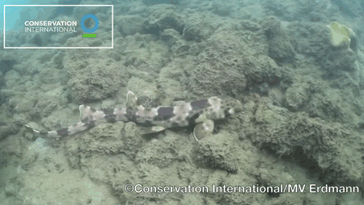
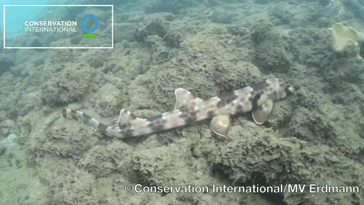
The epaulette shark (Hemiscyllium ocellatum) is a small species of longtailed carpet shark found in shallow, tropical waters (typically coral reefs or in tidal pools). The common name of this shark comes from the very large, white-margined black spot behind each pectoral fin, which are reminiscent of military epaulettes. Something unique (and adorable!) about these sharks is that rather than swimming, sometimes they “walk” by wriggling their bodies and pushing with their paired fins.
-
 shiznistie liked this · 8 years ago
shiznistie liked this · 8 years ago -
 akteg-liagiba liked this · 8 years ago
akteg-liagiba liked this · 8 years ago -
 yourcomadre-blog reblogged this · 8 years ago
yourcomadre-blog reblogged this · 8 years ago -
 boo-boo-kitti-fuck liked this · 8 years ago
boo-boo-kitti-fuck liked this · 8 years ago -
 lesless liked this · 8 years ago
lesless liked this · 8 years ago -
 nospheratusblack liked this · 8 years ago
nospheratusblack liked this · 8 years ago -
 itsthisbitchagain liked this · 8 years ago
itsthisbitchagain liked this · 8 years ago -
 kindofarebelhideout-blog reblogged this · 8 years ago
kindofarebelhideout-blog reblogged this · 8 years ago -
 thedevilmercy reblogged this · 8 years ago
thedevilmercy reblogged this · 8 years ago -
 the-captain-sushi reblogged this · 8 years ago
the-captain-sushi reblogged this · 8 years ago -
 ocioconart reblogged this · 8 years ago
ocioconart reblogged this · 8 years ago -
 purpledino20-blog liked this · 8 years ago
purpledino20-blog liked this · 8 years ago -
 duchesseclipse reblogged this · 8 years ago
duchesseclipse reblogged this · 8 years ago -
 onefoxtwofoxx liked this · 8 years ago
onefoxtwofoxx liked this · 8 years ago -
 katieelora reblogged this · 8 years ago
katieelora reblogged this · 8 years ago -
 joffreydahmer reblogged this · 8 years ago
joffreydahmer reblogged this · 8 years ago -
 dreamingina-fantasy liked this · 8 years ago
dreamingina-fantasy liked this · 8 years ago -
 butterscotchbaron liked this · 8 years ago
butterscotchbaron liked this · 8 years ago -
 llamaslikesciencetoo reblogged this · 8 years ago
llamaslikesciencetoo reblogged this · 8 years ago -
 meganinskorea-blog reblogged this · 8 years ago
meganinskorea-blog reblogged this · 8 years ago -
 llamafollower liked this · 8 years ago
llamafollower liked this · 8 years ago -
 fleshblight reblogged this · 8 years ago
fleshblight reblogged this · 8 years ago -
 27glassbottles-blog reblogged this · 8 years ago
27glassbottles-blog reblogged this · 8 years ago -
 27glassbottles-blog liked this · 8 years ago
27glassbottles-blog liked this · 8 years ago -
 koltonswong liked this · 8 years ago
koltonswong liked this · 8 years ago -
 girlswithbones reblogged this · 8 years ago
girlswithbones reblogged this · 8 years ago -
 notlooking23 liked this · 8 years ago
notlooking23 liked this · 8 years ago -
 thecostumedesigner liked this · 8 years ago
thecostumedesigner liked this · 8 years ago -
 deamoody liked this · 8 years ago
deamoody liked this · 8 years ago -
 nobody-caresanyway liked this · 8 years ago
nobody-caresanyway liked this · 8 years ago -
 0wlgvah00t-blog reblogged this · 8 years ago
0wlgvah00t-blog reblogged this · 8 years ago -
 0wlgvah00t-blog liked this · 8 years ago
0wlgvah00t-blog liked this · 8 years ago -
 seth62 reblogged this · 8 years ago
seth62 reblogged this · 8 years ago -
 sssunnydayzzz reblogged this · 8 years ago
sssunnydayzzz reblogged this · 8 years ago
Mainly interested in ecology, but also the entirety of science.
179 posts